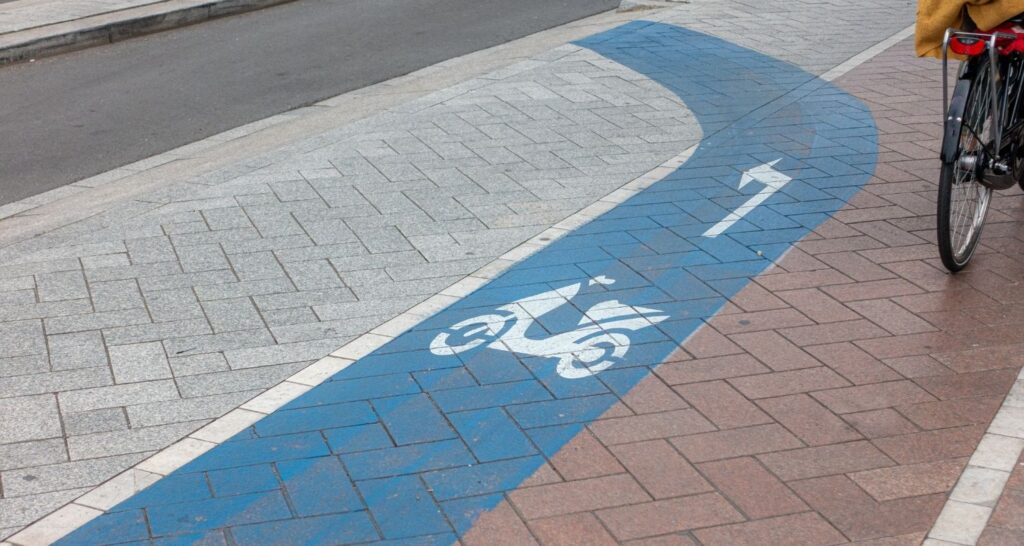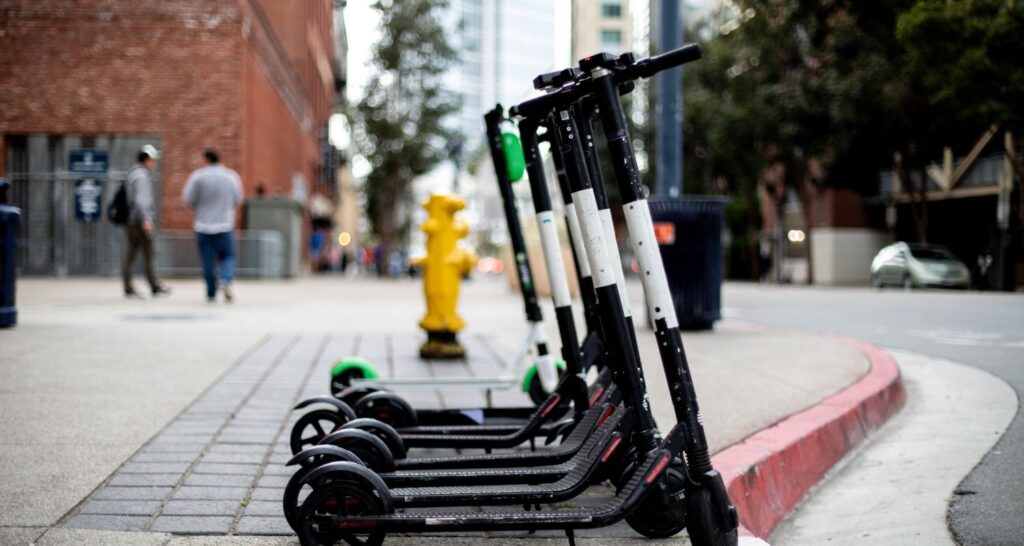
Micromobility: disrupt the car and rethink the city
Opinions expressed whether in general or in both on the performance of individual investments and in a wider economic context represent the views of the contributor at the time of preparation.
Executive summary: Personalised short distance transport represents the best future solution for cities. Micromobility offerings from bikes to scooters (both manual and electric) have significant cost, efficiency and environmental advantages relative to cars. Over 200 cities globally have accelerated their micromobility initiatives in the past year and consumers have embraced the concept, evidenced by both purchase and usage data. Although the micromobility market is still highly nascent, it could be worth $300bn by 2030. Even then, with a 5% share of the global transportation pie, the longer-term runway ahead is significant. The industry has begun to consolidate and deal valuation levels are lower now than they were pre-pandemic. This creates a clear investment opportunity for the longer-term, even if the majority of leading players are currently private and likely loss-making.
If ever there were a time for rethinking established ideas, then it would be now. What will be the attraction of cities in a post-pandemic world when it has become increasingly possible to live our lives without needing to leave our homes? Commuting currently sounds a much less compelling proposition than it did previously, particularly given growing concerns about environmentalism and pollution. We expect cities to continue playing an enduring role in the world; what needs to change, however, is how they – or the plumbing that underpins them – are configured.A quarter of the world’s population lives in cities, where the average traffic speed is less than 5km/hour. Congestion had – pre-pandemic – been rising globally. It had increased in New York and Los Angeles by some 30%, while London saw congestion levels 14% higher over the last decade (data from the United Nations and McKinsey respectively). Most journeys are surprisingly short, with 46% of US car trips less than three miles in distance. Being stuck in traffic is clearly not efficient with the average American losing 99 hours a year as a result (per INRIX research). At the same time, transportation is highly polluting, accounting for 28% of global carbon emissions (per Bloomberg New Energy Finance).
Few people can say that they enjoy congestion, gridlock, air pollution or parking shortages. The pandemic then may have only accelerated a trend that was inevitable, compounded by social distancing: why commute/ travel to cities, either by private or public transport? The imperative, then, is to re-engineer cities and make them a more attractive place not only to commute to, but also in which to live and work. Imagine the alternative. One future could see crumbling urban infrastructure, declining commercial real estate values, shrinking tax revenues and an exacerbation of inequalities.

Micromobility can be part of the solution for re-engineering cities and making them a more attractive place to work and live
This is where micromobility can play a critical role. Think of the concept as comprising personalised short-distance transport. Bicycles and scooters have existed since the 19th Century but were displaced by cars and public transport for much of the past hundred years. Micromobility devices can now be either manual (human-powered) or electric; owned either privately or belong to a fleet. In turn, these fleets may either be part of a public, planned and city-led initiative or be deployed by private sector firms. Think London’s ‘Boris bikes’ in the former category and Jump scooters in the latter.
The case for micromobility is simple: it’s about disrupting the car and providing a clear alternative to car ownership (and public transport usage) based on trip length. Micromobility vehicles could theoretically ferry much of the world’s population on a majority of their trips more cheaply and faster than comparable alternatives, while also consuming less energy. Shared micromobility vehicles are simple to use: just download an app, pay and off you go. The typical cost is around $1 to unlock the vehicle and then ~$0.15 for every minute travelled, although this will vary by country.
Think of micromobility as personalised short distance transport

Consider the benefits. Begin with cost. Electric scooters currently retail for $400-500, which implies you could buy around 100 of these for the cost of one electric vehicle. Assume five rides a day and an electric scooter could break even within less than four months (per McKinsey), implying the economics of shared micromobility are largely favourable to industry participants. It is a lot easier to scale up micromobility assets when compared, say, to car-sharing solutions. There is also a strong efficiency argument. One kilowatt hour of energy can only get a gasoline-powered car to travel 0.8 miles, whereas an electric vehicle could travel 4.1 miles under the same conditions. However, an electric scooter could travel 82.8 miles using the same amount of energy (per Valence Strategic Consulting). Think also of the reduced congestion benefits: around 7,500 bikes can pass through a single 10-foot lane in an hour, compared with between 600 and 1600 cars (per the National Association of City Transport Officials). Put another way, 10 bikes or 20 scooters can fit into the space occupied by one car (per Barclays Research). Also don’t rule out the holistic or more qualitative advantages. Consumers may value shared mobility solutions since not only are they faster, but they provide health benefits, help save the environment and allow for cities to be seen in a new light.

Micromobility solutions can save money, reduce emissions and generate health benefits for users
It’s no surprise then that the global micromobility market could be worth up to $500bn by 2030, with the US accounting for $200-300bn of this total, Europe $100-150bn and China $30-50bn (per McKinsey). The variations in addressable market size reflect different pricing assumptions. Viewed from another perspective, micromobility could account for a 5% share of the global transportation market by 2030 (per Goldman Sachs). These forecasts may prove conservative. Consider that US households currently spend over $1tr annually on the purchase, operation and maintenance of personal vehicles. Even if micromobility services were only to win a small share of this spend, then it could be significant. As a potential sign of things to come, it is noteworthy that electric two- and three-wheelers are currently outselling electric vehicles by a factor of ten to one (per Bloomberg New Energy Finance).
The global micromobility market could be worth $500bn by 2030
McKinsey
Cities are already beginning to respond. There has been a general acceleration of micromobility efforts during the pandemic, with streets closed to car traffic and bike lanes expanded. Micromobility Industries, a lobby group, estimates that over 200 cities globally expedited their micromobility efforts over the past year. Significant portions of London are being made car-free to reduce congestions and emissions as the city comes out of lockdown. Electric scooters are also being currently trialled in five British cities. Meanwhile, Paris is converting 50km of major city arteries into bicycle highways, while similar expansions are underway in Brussels and Milan (40km and 35km respectively). Elsewhere, such was the positive reception to Seattle’s temporary closure of 30km of roads to through-traffic in lockdown, that this has now become permanent.
Consumers are also embracing the trend. Multiple sources suggest that purchases of bicycles and related equipment have at least doubled in the past year, while some vendors of electric bikes/scooters have reported a tripling in their sales relative to prior year figures. A recent study conducted by Lime, a leading player within the micromobility space, found that whereas just 6% of users said they had purchased a car, truck or motorcycle during the pandemic, 23% had purchased a bicycle, electric bicycle or electric scooter. 75% of people interviewed in London and New York – which do not currently have scooter share schemes – said they intended to ride scooters in the future, while 35% said they would use on a weekly or daily basis, implying it could become a regular part of commuting.
Both cities and consumers have already begun to embrace micromobility

The conversion of opportunity to reality will, however, not be linear. Consider first who pays for new infrastructure and how it is regulated. This debate encompasses appropriate cycle/scooter lanes as well as potential docking equipment. Many cities, particularly in the US, have historically prioritised cars over all other transport modes. In New York, for example, bikes allegedly out-number racks by a factor of almost 30 to 1 (per the New York Times). Further, dockless bikes and scooters remain a relatively novel concept and most cities do not have proper regulations in place for how programmes should run. While some cities are celebrating their successful launches, others are banning such companies from operating, citing safety concerns. Beyond this topic, there is the related issue of aesthetics. Parked/ abandoned bikes and similar do not really belong on pavements or streets and can creates hazards for other riders, drivers, and pedestrians. The aforementioned safety concerns should not be understated either. Electric bikes and scooters lack airbags and other safety features that vehicles would possess, representing a risk for users involved in accidents. Furthermore, owing to their silent nature, they can be particularly dangerous for people with disabilities such as those who are blind and partially sighted.
None of the above is insurmountable. Solutions will likely require increased planning and coordination, typically between the public and private sectors, such as in cities like London and Hong Kong. Cities, of course, are not homogenous entities either and no one-size-fits-all approach exists. Some degree of trial and error will therefore be inevitable. Also, do not forget that the industry is still highly nascent. Most businesses operational in the space are less than five years of age. Around $150bn has been invested in new mobility technology businesses over the past decade, with an estimated $6bn directly into micromobility start-ups during the five years (per Pitchbook and McKinsey respectively). Out of the pandemic may come the investment opportunity. Not only have implied valuation levels for many start-ups come down (Bird and Lime’s estimated valuations are an estimated one-fifth below peak levels), but the industry has consolidated (Bird has acquired Scoot, Lime acquired Jump etc.). With economies re-opening, interest in the space is likely to grow again.

Businesses that ‘own’ the customer relationship look best-placed to benefit
History would suggest that those who control the software and hence ‘own’ the customer relationship will be best placed to benefit over the medium-term. However, almost all the businesses operational in the space currently are either private or part of bigger organisations. Accurate and easily comparable information on users and usage is therefore hard to come by. Uber has a strong franchise in the space, having acquired Jump bikes in 2018 and then transferring it to Lime in May 2020 as part of a larger funding round. Uber has options to purchase Lime between 2022 and 2024 at a set price. Lime/Jump services are currently available in around 100 cities globally. Also watch for Bird (founded by ex-Uber executives), Spin (owned by Ford) as well as emerging European businesses such as Voi and Tier. In China, Didi Chuxing has developed a leading position, although many other players including Mobike, Hello Bike and Ofo are also present.
The car, of course, is not going to disappear overnight. Further, time will only tell if the best last-mile alternative ends up being electric scooters, dockless bikes or some new form of transportation yet to hit the streets. We expect some combination. Micromobility will go multi-modal. Watch this space.
Alex Gunz, Fund Manager, Heptagon Capital
Past performance is no guide to future performance and the value of investments and income from them can fall as well as rise.
Disclaimers
The document is provided for information purposes only and does not constitute investment advice or any recommendation to buy, or sell or otherwise transact in any investments. The document is not intended to be construed as investment research. The contents of this document are based upon sources of information which Heptagon Capital LLP believes to be reliable. However, except to the extent required by applicable law or regulations, no guarantee, warranty or representation (express or implied) is given as to the accuracy or completeness of this document or its contents and, Heptagon Capital LLP, its affiliate companies and its members, officers, employees, agents and advisors do not accept any liability or responsibility in respect of the information or any views expressed herein. Opinions expressed whether in general or in both on the performance of individual investments and in a wider economic context represent the views of the contributor at the time of preparation. Where this document provides forward-looking statements which are based on relevant reports, current opinions, expectations and projections, actual results could differ materially from those anticipated in such statements. All opinions and estimates included in the document are subject to change without notice and Heptagon Capital LLP is under no obligation to update or revise information contained in the document. Furthermore, Heptagon Capital LLP disclaims any liability for any loss, damage, costs or expenses (including direct, indirect, special and consequential) howsoever arising which any person may suffer or incur as a result of viewing or utilising any information included in this document.
The document is protected by copyright. The use of any trademarks and logos displayed in the document without Heptagon Capital LLP’s prior written consent is strictly prohibited. Information in the document must not be published or redistributed without Heptagon Capital LLP’s prior written consent.
Heptagon Capital LLP, 63 Brook Street, Mayfair, London W1K 4HS
tel +44 20 7070 1800
email [email protected]
Partnership No: OC307355 Registered in England and Wales Authorised & Regulated by the Financial Conduct Authority
Heptagon Capital Limited is licenced to conduct investment services by the Malta Financial Services Authority.



